Corey and Katherine in Masi Mara
I had the pleasure of meeting Corey Stroeder and Katherine Ng on the Dairy Farm Field Trip earlier this year. They were telling me all about their upcoming Safari at that time. When I saw them again at Mary Bailey’s annual Christmas Potluck dinner, they had so many stories to tell. Lucky for us, they came to the Winter Solstice 2011 at our house, too, as fellow Edmonton Slow Food members and we were able to get to know them better. Fortunately, we will be having them over on the 18th of February to see all of their Safari pictures and to hear about their entire trip. But, for now, I have asked Corey to share with you their home stay in Kenya, with a focus on the food!
My wife Katherine and I were talking to Valerie about our adventure to Kenya in late October. Valerie was particularly interested in the home stay and requested that we do a guest blog to share our experiences with a focus on the food.
The home stay was the reason why we chose this particular safari:Â “œCultural Kenya” by Gap Adventure. It was scheduled for Days 5 and 6 of our 13 day safari. We drove into the Lore village shortly after 2pm and were welcomed by ornately costumed performers singing and dancing. It was nothing like we had ever seen before!
httpv://www.youtube.com/watch?v=l6EOAMygDjg
These villagers were excited to have us there and we were excited to be there. The introductions were accompanied with smiles, hand shakes and even hugs. Not unlike other cultures, the Lore villagers involved food and drink as a social activity.
We were treated to common snacks of roasted groundnuts (aka. peanuts) and mendazi (similar to a Tim Horton cake donut timbit but denser and 3x the size). And drank a sweet black tea heavily diluted with milk. The servings were massive (the portion distortion was very distorted”¦) We’re unsure if they thought all foreigners had big appetites or if they were very generous, or both. Although we were considered family, we were treated like royalty: we were served first and our Kenyan hosts ate only after we were done eating”¦
Katherine and I were very fortunate to have been matched with our home stay family. The matriarch was Mama Benta, a single mother of five kids. The eldest son, Victor, twenty one, spoke English fluently and was our primary contact. He lived on Mama’s land in his own house adjacent to the main family house. The main house consisted of a living room and a bedroom where Mama and her two youngest daughters, twelve and fourteen, lived. The daughters left for school very early and we only saw them at supper time.
From the welcoming ceremony, Victor, Mama, Katherine and I had a long walk to Mama’s land. Despite all the free roaming animals (a dog, two cats, two kittens, several chickens, and many chicks), we were amazed at how tidy Mama kept her home.
The sun started to set and Mama and her niece began cooking supper in a kitchen located outside in the back of the main house.
When Victor’s sisters came home from school, they helped prepare supper also. Impressively and surprisingly, they cooked for a solid two hours in almost complete darkness. All the hot food and the boiled water, had been heated over a single coal fire.
Despite Katherine and I offering to help, we were turned down.
Around 9pm, Katherine, Victor, Victor’s friend and I were sitting in the living room with only the light of a kerosene lamp. We knew supper was ready because Victor’s youngest sister stood before Katherine with a pitcher of warm water and a basin to prompt Katherine to rinse her hands. She poured the water over Katherine’s hands and held the basin under Katherine’s hands to carry the runoff water. All of our meals were prefaced with the same hand rinsing routine. Our home stay family had to acquire all water from the nearby river.
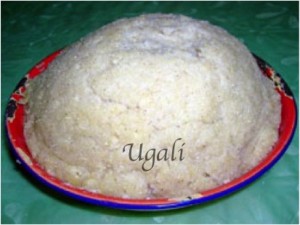 We watched Mama, the niece and other daughter cover the coffee table with a supper of ugali, stew, pineapple and watermelon. Ugali is a starch staple. This ugali was made by heating ground cornmeal and water in pot until it becomes a heavy solid mass. It was extremely dense and bland, but, absorbed the flavor of the sauce well. The stew consisted of a rich oily beef broth with chewy pieces of beef and soft cubes of potatoes. For our dessert, there were slices of fresh sweet pineapple and juicy watermelon. We drank the same milky tea that had been offered at our welcoming ceremony.
We watched Mama, the niece and other daughter cover the coffee table with a supper of ugali, stew, pineapple and watermelon. Ugali is a starch staple. This ugali was made by heating ground cornmeal and water in pot until it becomes a heavy solid mass. It was extremely dense and bland, but, absorbed the flavor of the sauce well. The stew consisted of a rich oily beef broth with chewy pieces of beef and soft cubes of potatoes. For our dessert, there were slices of fresh sweet pineapple and juicy watermelon. We drank the same milky tea that had been offered at our welcoming ceremony.
For all meals during the home stay, Victor insisted that food be taken off of the serving dishes using utensils. We suspected that this practice was unnatural to our hosts and only done for our benefit. Katherine and I were each given a fork and spoon for our meal; meanwhile, our Kenyan family ate with their hands.
We later learned that “The traditional method of eating ugali (and the most common in the rural areas) is to roll a lump into a ball with the right hand, and then dip it into a sauce or stew of vegetables and/or meat. Making a depression with the thumb allows the ugali to be used to scoop, and to wrap around pieces of meat to pick them up in the same way that flat bread is used in other cultures.”
Our hosts’ graciousness continued when the only bedroom, normally occupied by Mama and the daughters, was given up for the two of us. They slept on the concrete floor in the living room. It was becoming obvious that Kenyan hospitality is second to none.
The next day we woke to a beautiful sunny morning. Unfortunately, I suffered from grumblings of a common traveler’s ailment. We were met by Mama, her helpful niece, as well as a neighbour busily preparing breakfast. Katherine and I suspected that they had been up since sunrise.
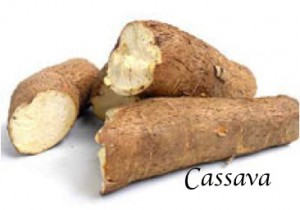 Breakfast was ready at about 8:30am and we were joined by another neighbour whom was partially blind and elderly. Katherine enjoyed a breakfast of thinly sliced boiled cassava, from the garden. The cassava was firm and mild in flavor. Also offered was heavily buttered store bought whole wheat bread as well as the pineapple and watermelon slices leftover from supper. Instant coffee and that milky tea was provided. It’s interesting how instant coffee and sliced bread for breakfast transcends across the world.
Breakfast was ready at about 8:30am and we were joined by another neighbour whom was partially blind and elderly. Katherine enjoyed a breakfast of thinly sliced boiled cassava, from the garden. The cassava was firm and mild in flavor. Also offered was heavily buttered store bought whole wheat bread as well as the pineapple and watermelon slices leftover from supper. Instant coffee and that milky tea was provided. It’s interesting how instant coffee and sliced bread for breakfast transcends across the world.
My intake consisted of Cipro, Imodium, charcoal and lots of our purified water. It was really hard for me to turn down food. especially knowing that the cooking was a long and arduous process. Although Mama was understanding, I could see the disappointment in her eyes as my denying her food was denying her care.
Victor took us for a tour in the morning around the village while Mama and her helpers prepared lunch and did other chores. Upon our return, around 2pm, lunch was ready. Again, we were joined by the elderly neighbour to feast. There was a chicken stew: one of their chickens that had been killed especially for us. None of that chicken was wasted: skin and meat on bones as well as organs were surrounded by a broth of chicken juices and heavy oil. The chicken was surprisingly tough. There was also finely chopped cabbage mixed with a bit of vinegar which provided a nice contrast of refreshing crunchiness. The buttered bread from breakfast was re-served.
In the afternoon, we visited a local elementary/junior high that Victor had attended. This school had 300 students and nine teachers. It was a lot of fun watching the students sing and dance for our group. Mingling with the students was overwhelming! We got mobbed by kids wanting their photos taken!
On our last night of the home stay, we were visited by Victor’s friend from the night before as well as three other friends of Victor’s. The lovely women with whom we shared company at breakfast and lunch were also there for supper. Accordingly, there was more food and understandably supper was served relatively late (around 9:45pm). We dined on chapatis which is a tasty, lightly pan fried flat bread, another chicken stew (another chicken had been killed), boiled brown beans and a dark ugali (this one had been made from millet). Milky tea was offered.
The next morning was rainy and fit the grey mood of us having to leave our Kenyan family. Katherine woke up with grumblings of the traveller’s ailment that I was recovering from. At breakfast, Mama, her niece, Victor, and the elderly neighbor and I had mendazi and there was more of that thickly buttered store bought whole wheat bread as well as instant coffee.
After breakfast, we took many pictures of Mama and crew: our time together was short, but memorable.
Our food experience during the home stay left us astonished and humbled by the minimal resources and scarcity. We, however, always looked forward to the amazing meals, not necessarily for the food itself, but for the pride, care and effort that was involved. There was a genuine sense of community with the preparation as well as the sharing of the final meal.
The intimate level to this insight was invaluable:our Kenyan family will be a part of us for the rest of our lives.
httpv://www.youtube.com/watch?v=tJKHrqA6kG4
I was so curious after receiving this post from Katherine and Corey that I did a little research and came up with some of the recipes for the food they ate at their homestay. Katherine and Corey, please tell me how authentic each of these sounds. I am not talking about the oven method, but more the ingredients and the final product.
Thanks to the both of you for working at providing myself and my readers an account of your incredible experience at this Kenyan home stay! Has anyone else had a similar experience? Please share!
Chai (Milk Tea) Recipe
Ingredients
- 1 cup water
- 11/2tsp tea leaves (or 1 tea bag)
- 1 cup milk
- 2 to 4 teaspoons sugar
Instructions:
- Heat the water and tea leaves together in a 3 to 4 quart saucepan, until it boils
- Stir in the milk and sugar and cook until the boiling point of the milk
- Remove and strain the Chai into a tea jug or kettle; serve with bread, mandazi or chapati
Maandazi (Sweet Donut) Recipe
Ingredients:
- 1 cup butter (or margarine)
- 5 tbsp sugar
- 2 large eggs, beaten
- 1/2cup milk
- 6 ground cardamom seed
- 2 tsp baking powder
- 4 1/2cups all purpose wheat flour
- 1/2cup water
- 6 cups vegetable oil
Instructions:
- Mix and whisk together margarine and sugar
- Add eggs and milk and mix
- Add the cardamom and baking powder, then add the flour and water; if the dough is sticky, add more flour
- Knead well until the dough is smooth and soft
- Cut the dough into 3 balls and roll out each to about 12 inches in diameter and 1/4inch thick; slice into 2-inch strips and cut into squares
- Heat the oil in a deep frying pan; test if the oil is hot enough by dropping in one mandaazi: if it sinks then floats to the top, the oil is ready
- Cook the maandazi a few pieces at a time (do not overcrowd them) in the pan; turn often until golden brown
- Remove from pan, drain and cool
- Serve with hot milk, coffee or tea (chai).
Traditional Kenyan Chicken Stew Recipe
Ingredients:
- Whole chicken
- onions
- potatoes
- tomatoes
- garlic
- water
- chicken stock
- milk (optional)
- flour
Directions:
- Season a 3-7 pound chicken with garlic powder and pepper; roast chicken in oven at 325 degrees
- While chicken is cooking, dice potatoes, slice carrots and chop onions to desired thickness; place vegetables in stewing pot and add water until vegetables are covered with about an 3 inches of water
- Boil rapidly until potatoes are just finished; remove vegetables from the pot by straining them and keep the water
- By removing the vegetables and letting them cool, you prevent overcooking them and they won’t dissolve into nothing
- With the remaining water on low heat, add a cup or two of chicken stock or milk (milk optional)
- Fill a small seal-able container with 1 cup of cold water, then add 1 cup of flour, cover, seal, then immediately shake vigorously
- You are making a thickener for the stew the consistency of glue with no lumps: if there are a few lumps you can remove them by straining
- Rapidly add thickener to the liquid mixture using a whisk; bring mixture to a slow boil and simmer to desired consistency
- Add the cooked (now cooled) vegetables to the gravy; when the chicken is finished roasting, drain juices into the gravy.
- Remove skin and bones; tear or cut chicken apart and add to the gravy (now stew)
- Stir in about 2-3 tablespoons of salt and about the same amount of pepper to taste; let stew simmer for a little longer and serve with ugali
NOTE: Katherine and Corey’s Chicken Stew was not thickened at all. It was probably made of similar items, but the sauce or broth was runny.
Ugali Recipe
Ingredients (4 servings)
- 4 cups water
- 4 cups maize meal or corn meal flour
Instructions:
- Bring water to a boil in a pan
- Add the corn or maize meal and stir with a wooden spoon until the mixture is thick and smooth
- Make sure it is not too stiff
- Add boiling water if it is too thick; gather the mixture in the middle of the pan and turn the heat to low
- Cover the pan and leave it on low heat for 15-20 minutes, turning occasionally
- Flip the ugali onto a plate and, after it cools a bit, form it into a “cake”
Chapati (Round Flat Bread) Recipe
Ingredients (6 servings)
- 1 cup of whole wheat flour
- 1 cup white flour
- 2 tbsp oil or ghee
- 3/4 – 1 cup of warm water
- Salt to taste
Instructions:
- Mix the flour in a bowl and add salt and oil with hands
- Add a little bit of water at a time and knead well for about 10 minutes until you have a stiff and smooth dough; cover and let rest at least 30 minutes or up to two hours
- Knead the dough well again and divide into egg-sized balls; dust each ball with extra flour, flatten and roll out thinly into circles
- Heat an ungreased, heavy skillet or griddle over a medium flame; lightly grease the pan and slowly heat the first chapatti; cook on one side for about 1 minute or until lightly brown, then flip and brown the other side
- Press the sides of the chapati with a spoon until it puffs; remove from skillet to a warm dish or foil paper and wrap it to keep it warm
- Repeat this process, wiping the pan with greased paper every time a new chapati is to be cooked
- Serve warm with a meat stew and/or cooked vegetables; also served with hot milk or chai
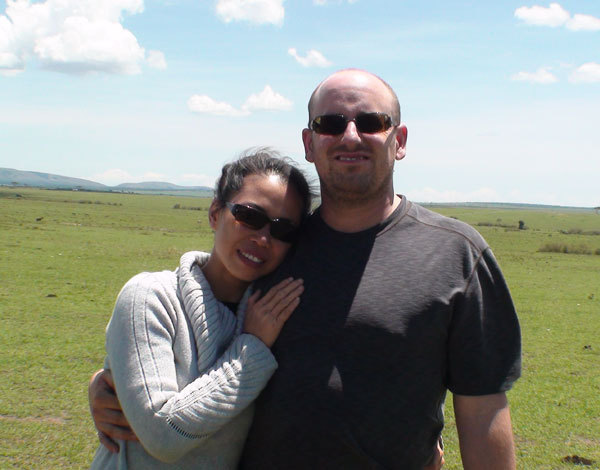
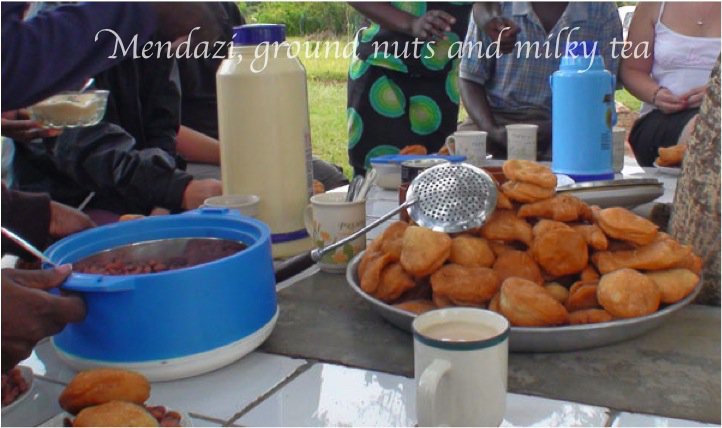
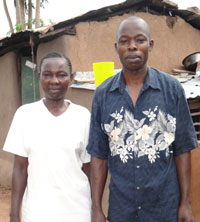
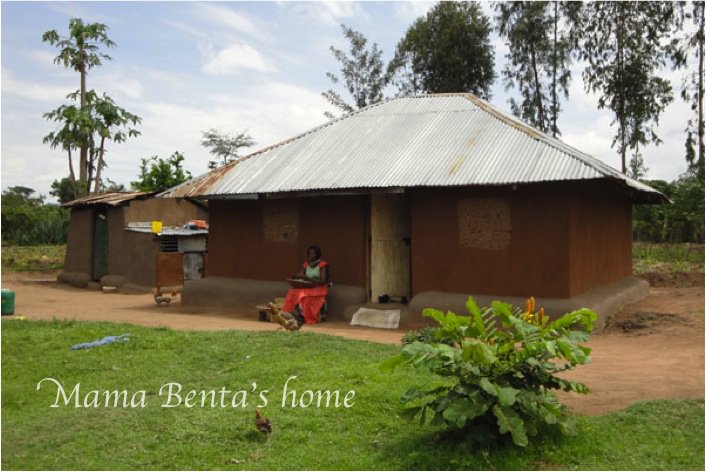
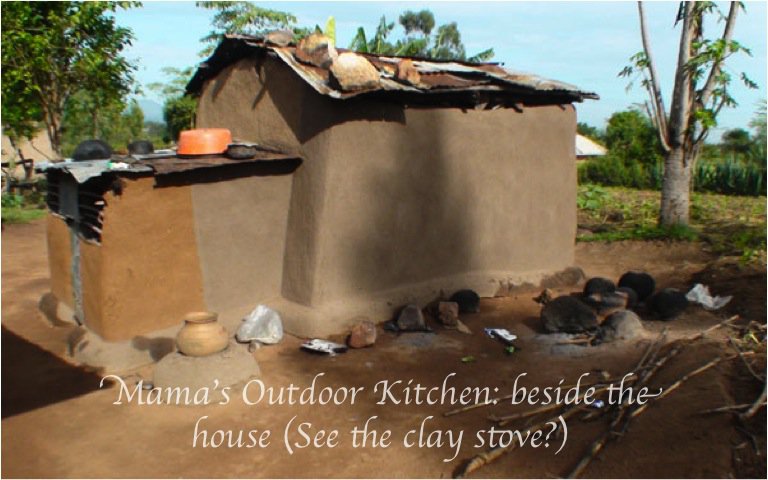
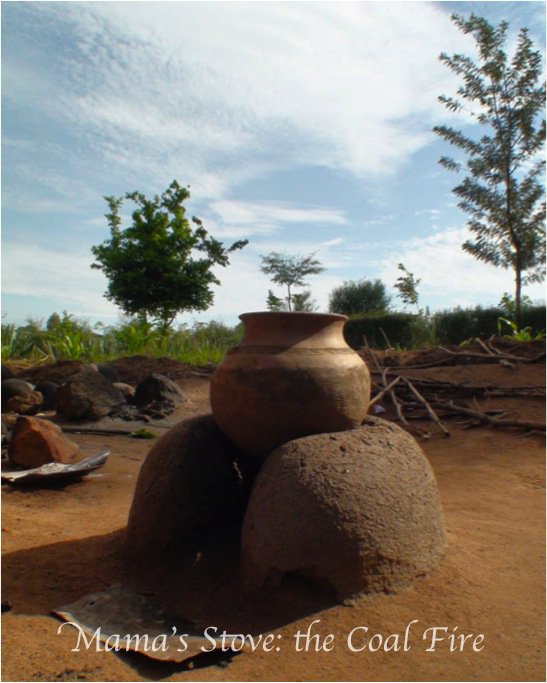
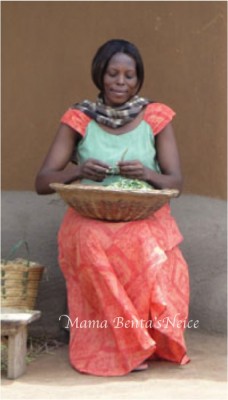

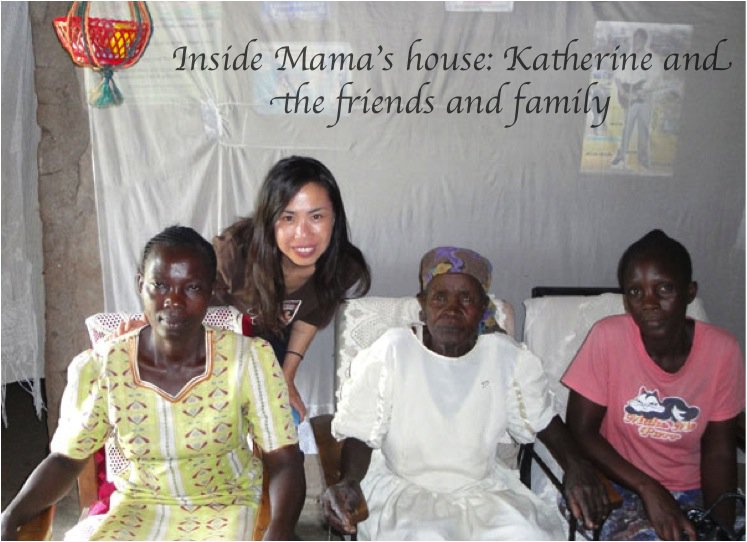

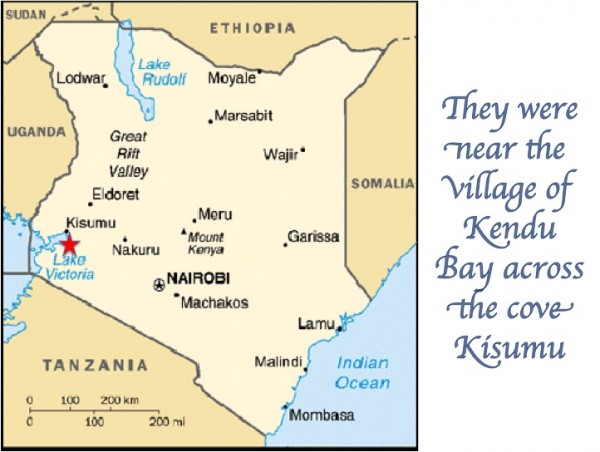
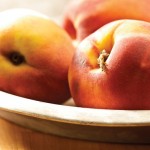
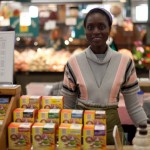
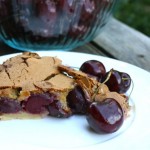
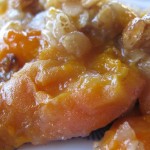

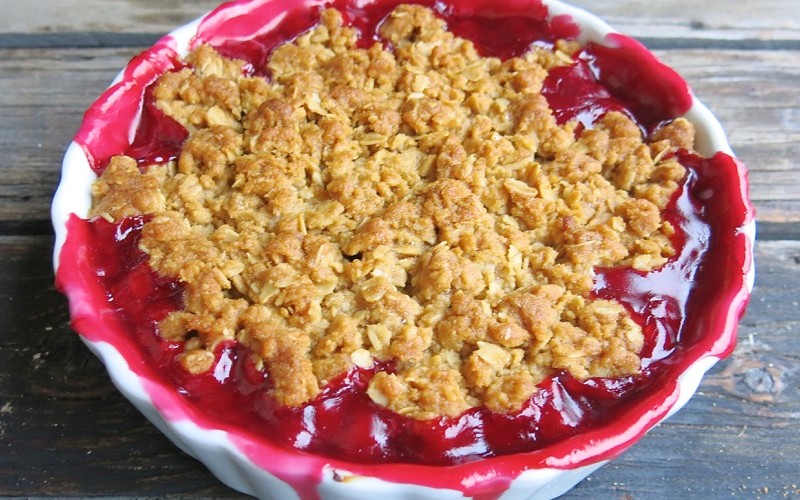





I have questions for you, Corey and Katherine!
1. Was the bedding clean?
2. What was it?
3. Do they get paid to house you? Obviously they do: how much? Are the compensated fairly?
4. How many others were there staying at how many other houses?
5. What did you do there in your spare time?
6. What did the food taste like: spicy, bland, aromatic, tasty in what way? off putting in what way?
7. What kind of oil did they use?
8. Why did they use so much oil?
9. I am sure they do not have chicken two nights in a row; what would they usually eat?
10. Did they have a garden?
11. What spices did they use?
12. What were the bathrooms like?
13. What were you MOST surprised about… what unnerved you?
14. Where do they buy things – get their clothes and so on…. 15. What was your favourite food there?
16. How safe was the water? Did you get sick from drinking it? 17. Was their food preparation clean by our standards?
18. How do they bathe?
I know I asked you only to write about food, but the whole thing is there… and it is a beautiful whole thing. What a dream!
That is all of my questions, for now!
🙂
Valerie
XO
Valerie, thank you for having such a great guest post on your blog. It’s posts like these that remind us of how fortunate we are here in Canada.
Mr.Stoeder,
Thank you for this great guest post and for sharing this experience with us. I’m surprised the chicken was so tough as well. Wonder what the chickens were fed. I’m sure this was a very memorable experience on both ends. Thank you for sharing.
Lequan,
We saw the chickens eat the leftovers from the plates. In the last video you can see Victor whistling the chickens to come. Mama Benta calls the chickens and then scrapes off the dried ugali and the birds just love it.
Corey
1. The bedding was clean- hand washed with water from the local river. We, however, had brought our own sleeping bags, so the bedding didn’t matter. Over our bed was mosquito netting- I still got a couple of bites, Katherine was bite free
2. What was what? I am guessing the bedding. If so it was linen/cotton sheets.
3. Financial compensation from Gap Adventures for housing guests was unknown to us. Our travel guide, Daniel was very influential with the home stay as he is from the Lore tribe. The welcoming ceremony was on his family’s land. Daniel helped us decide on our gifts for the family which were staples like flour, butter, sugar, salt and beans. Katherine and I had also gave additional gifts.
4. Our tour group had 13 people. Couples where kept together, or paired according to gender, one fellow was the lone wolf with his home stay. So there were 7 participating home stay families.
5. The agenda was pretty busy, but we go for walks around the village and met with neighbours. Otherwise, most of our spare time was spent socializing with our hosts and their friends.
6. Food at the home stay was simple and not flavourful. I think the off putting part of food was the toughness of the meat (chicken or beef). (I did enjoy a fresh tilapia fish, that was deep fried and served whole, in Kisumu- it’s a favourite among Kenyans around Lake Victoria.)
7. We’re not sure what oil was used by Mama Benta… In the super markets, entire aisles where dedicated to vegetable oil or lard in many different brands and volumes.
8. Could have something to do with the cooking methods. Unfortunately, I wasn’t able to watch the cooking process. Another couple in our safari, also commented that their home stay family was heavy handed with the oil used in their food and found their food unpalatable.
9. I think they would probably have Ugali with a broth regularly…
10. Their entire plot of land was to grow food on a subsistence basis. Behind the house they were growing cassava. Potatoes and corn had been recently harvested. There was a banana tree on their land.
11. The meals were pretty bland. I imagine just salt and maybe pepper.
12. No bathroom- they had an outhouse located on the back corner of the lot. The walls of the outhouse was constructed from branches, small wood and mud. The ceiling was constructed out of thatch and branches. The floor was made out of cement, except there was a narrow long oval hole (they use a hole in the ground, not toilets…) During the day, black flies were swarming around; at night crickets were chirping; there was always loads of ants running along the branches. We brought our own toilet paper…
13. Most surprised with the hospitality. Unnerving was the toilet situation while fighting the common traveller’s sickness.
14. There was a neighbourhood store/shed for little things- it was a very simple convenience store. Clothing- we’re not sure where they bought their clothes (possibly western nation donations). The closet town was Kendu Bay that had simple shops- they could walk or hired transportation.
15. The pineapple was amazing. (I suspect though, there was some cross contamination when the pineapple was cut and possibly resulted in me getting sick.)
16. We brought water purifying drops and also purchased bottled water from the grocery store before arriving at the village.
17. No- food prep was not clean according to our standards. They tried their best to keep things clean, but the kitchen was outside next to the chicken coup and goat shack. (The goats weren’t roaming on the family’s land- they roamed around the exterior in the fields. Victor, gathered up the goats at the end of the night…)
18. Next to the outhouse was another walled off section for bathing. Victor was nice enough to provide us with hot and cold water filled in these big containers. From these containers, we would have to pour out the water into a basin and use this water to bathe with. It was actually a really pleasant part of the experience.
The village was located outside of a town called Kendu Bay. Find it here via Google Maps: http://goo.gl/maps/SesP
Corey Stroeder & Katherine Ng
WOW, Corey! I think I might owe you dinner after all that!
🙂
Valerie
(BUT i read and HUNG on every single word!)
This is awsesome. I am from Kenya and I am ever so impressed and touched to see people/families from the first world wanting to experience Africa, which is so distance, so different, so risky. If okay I can link Canadians to such experiences also since I come from the village.
Wonderful to know, Virginia!
Would you be willing to share more of your personal story, with a focus on your country’s food and the transition to your new life here with my readers?
🙂
Valerie
What an awesome post Valerie! I had the privilege of spending a couple summer in Africa several years back. I remember those big outdoor stoves–it’s amazing how well they work! I loved reading this, remembering back, and am excited about the recipes!
Loved this post, Valerie! I really enjoy learning more about other cultures through their cuisine. Valerie, thanks for doing some research and finding those recipes for us…I would love to give that stew a try!
What a wonderful experience Corey and Katherine had — a huge thank-you to them for sharing with us!
I am so jealous of exotic foodie travels!
Great post! This sounds like such a rewarding trip! I am quite jealous 🙂
I must say that is a awesome post.And besides that I am surprised to see a lot of similarities with rural India.We also have wood and coal ovens in villages where gas is not available.Indian tea (chai) is also dowsed with milk and sugar.The flatbreads (chapati) are the made the same way.Wonderful post..loved every bit of it.Thanks for sharing.
Tanvi:
I am happy to see these similarities from you. I teach a lot of Children from various parts of India, mostly from the Punjab. My understanding is that the life and food in rural Kenya would be very similar to the life and food in rural India, but I was waiting to ask a friend. I definitely noticed a similarity with the food – and even the way it is cooked. They also have a chicken curry traditional in that region that I would have thought to be an Indian dish had I not known better.
🙂
Valerie
What a wonderful guest post and such an amazing experience. I think food crosses all cultural borders! Kudos to Mama Benta too!
WOW…., thank you so much Valerie & Corey & Katherine. What a wonderful experience to step into another culture, I’m really happy they were compensated well., it sounds like they really knew about caring hospitality.
Great information and questions/answers.Love this post.
this is great to see how you did spend your time here in kenya the chicken was hard because it is not the common broilers that many western people have used to but are reared iin a free range and they may be as old as one year and therefore have a hard meat. kenya is a gret place for you to visit and instead of staying in posh hotels then you may choose to live with local communities to learn some of their culture like the way Corey Stroeder and Katherine Ng did
I went to school with Katherine and lost touch about 10 years ago. I was so happy to stumble on this blog today and see that she is now married and still traveling the globe. Thanks for sharing! 🙂
Katherine, I am sure, will be delighted to see this.